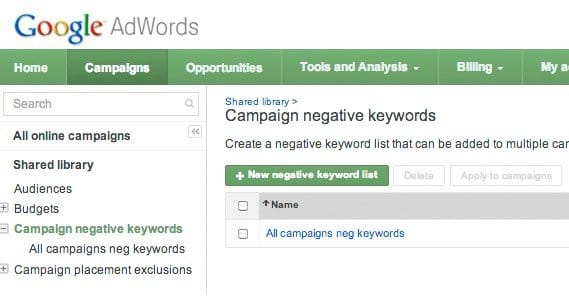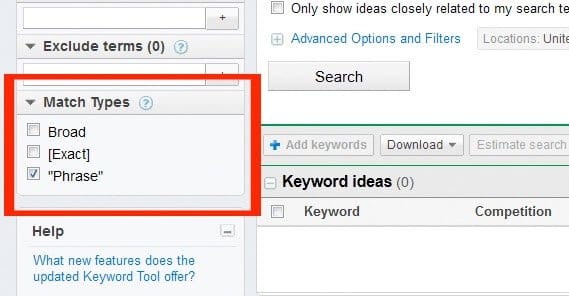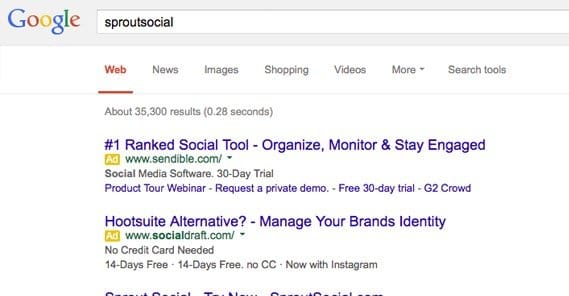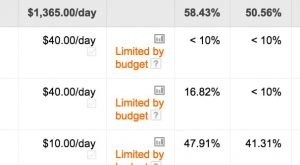How to Make Sales with a Low Budget AdWords Campaign

One of the best forms of advertisement online right now is PPC, through Facebook, Google or another network. One of the main reasons it’s such a good form of advertisement is because of the incredibly low costs. You can get great targeted traffic for only a handful of cents per user, if you find the right niche.
At least, that’s what everyone says.
The reality is, it’s hard to effectively use PPC on a low budget. You’re effectively replacing the money you would spend with time and effort invested. It may be cheaper in terms of budget, but it’s not cheaper in terms of time and knowledge. That’s why you see so many people railing against PPC in general, or against AdWords specifically. These are people who didn’t have the time or the knowledge to run an effective campaign, and didn’t have the budget to replace those sufficiently. They claim AdWords is too expensive, too ineffective. And, for them, it was.
My goal with this post is to keep you from becoming one of those people. I’m going to try to educate you about the techniques and methods you can use to make an effective AdWords campaign, without having to dump a lot of money into it.
Be aware, however, that you have to value your time. When you’re doing this yourself, you’re spending time you could be spending on other tasks, potentially tasks only you could do. You can hire someone to run AdWords for you; you can’t necessarily hire someone to do those other tasks.
The other thing to know is that PPC is very scalable. When you get a system that works when you’re paying $10 a week, that same system is going to work, and is going to be more effective, when you bump your budget up to $50 a week. At some point, you’ll find diminishing returns, but there’s a very high ceiling.
Generalities: How to Run a Cheaper Campaign
PPC, which is what AdWords is, works on a simple system.
You run ads, and you pay X amount of money each time a user clicks an ad. There are only so many variables that can change in order to reduce costs. You can target better users to get more clicks with fewer wasted views. You can target different keywords where your clicks are cheaper. You can make changes to campaigns to reduce competition and increase click through rates. Perhaps most importantly, you can change the destination of your links to encourage more conversions; after all, if you get 100% CTR but 0% conversion rates, all you’re doing is wasting money.
You’ll find that every tip and bit of advice I give will help optimize one part or another of this process. When you boil things down, it’s all relatively simple. The point of the following advice is to give you specific, actionable tips you can use to reduce costs or boost sales immediately.
Proactive and Reactive Negative Keywords
When you’re running a PPC campaign, you’re centering it around keywords. That’s how the systems work. You target keywords and your ads run for queries related to those keywords. Have you ever heard of negative keywords, though? Various studies and polls have shown that as many as 25% of businesses aren’t using them.
Negative keywords are, essentially, keywords that make your ad not run for that query. So if your keyword was “Nike running shoes” and someone typed in “Why do Nike running shoes suck?” you wouldn’t really want your ad to run there. The user has a negative opinion and is looking for verification; they’re pretty unlikely to change their minds and buy based on your ad.
Another example might be “cat food” as a keyword. By leaving it as is, someone looking for a specific cat-themed food truck would see your ads. They don’t care about your cat food, though, and might not even have a cat. So, you would want to make “truck” a negative keyword.
Negative keywords can be divided into two categories, though they will share many of the same words. There are proactive negative keywords, and reactive negative keywords.
Proactive negative keywords are lists of keywords you add to the negative words list immediately. You know the keywords on this list, like “sucks,” aren’t going to be beneficial places to run your ad, so you eliminate them. You can find long lists of such negative keywords pretty easily, using tools or just lists publicly provided.
Reactive negative keywords are more like the truck example. You wouldn’t need to list “truck” as a negative keyword if that search literally never comes up. It wouldn’t hurt to do so, but it doesn’t help so there’s no benefit. Basically, what you’ll be doing is keeping an eye on the AdWords search query reports you get. When you see users clicking your ads from a query that isn’t helpful, you can add that set of keywords to your negatives list.
By adding negative keywords to the list, what you’re doing is restricting the places your ads can run. That allows you to more finely tune the people who see your ads, and thus the people who click them. You don’t want clicks from people who have pre-existing negative opinions and have no intention to buy, or from people who are finding your ads in searches for similar but unrelated products or services. Those people aren’t going to convert, flat out. This way, you’re not wasting money on their clicks.
Pick the Right Match Type
Match type is what determines how precisely your keywords is followed for ad visibility. For example, if your keyword was “running shoes” and you used the most broad match type – the default on AdWords – your ad would show up for someone who put “red high heel shoes” in the search field. Your keyword has “shoes” and so does the query, so you’re technically relevant by broad match standards. Obviously, though, this isn’t very effective; the people looking for high heels probably aren’t looking for running shoes.
One tier more specific is the modified broad match. This is a good one to use. Basically, instead of using “running shoes” as a keyword, you would use “+running +shoes”. The + means the query needs to include that term, somewhere. With both items flagged with the +, they both have to be in the query. Searches like “red running shoes” and “shoes for running” would both work.
To get more specific, you can use phrase match. This requires you to put the entire phrase within “” marks, like “ “running shoes” “. This means only queries with the exact phrase would display your ad. In the same example, “red running shoes” would show your ad, but “shoes for running” would not.
Even more specific is exact match, where you put the keyword phrase in brackets like []. “[running shoes]” as a keyword would only show your ad for the query “running shoes” and not “red running shoes” or anything else.
It’s very rare that you want to use exact match. Most of the time, a modified broad match is enough. Sometimes, if your keyword phrase is made up of generic words with a specific meaning in a specific order, phrase match is ideal. Broad match is almost never the right choice, when you’re trying to optimize costs.
Narrow Targeting by Location, Time, or Device
The narrower your targeting, the smaller the audience who will see your ads.
This can be a good thing or a bad thing, depending on how well you’ve deduced your targeting options. If you’ve done it properly, you’ve eliminated a large audience that wouldn’t buy but might click. If you’ve done it poorly, you’ve just lowered the number of people who see your ads without any rise in quality. Your goal is to cut out as many people who won’t buy as possible, while keeping in as many who will as you can.
AdWords has a lot of targeting options, but the three I’m going to mention here are the three in the subhead.
- Location. Google’s geotargeting can be surprisingly specific. You can choose to target an entire country, or to eliminate countries and target the regions left over. I recommend restricting your ads to a specific country, usually the United States, or whatever your home country happens to be. That’s for Internet-based services or products you can ship continental. For more specific targeting, you can target areas within a country, like states, counties or cities. If you have a local business with a restricted delivery range, this is more idea. You can also do a geographic radius around a particular location. This is perfect for mobile ads and for local businesses with a very small delivery or service range.
- Time targeting is also known as dayparting. Dayparting allows you to choose certain hours during a day and certain days during a week and limit your ads to running during those segments. If you know that 90% of your searchers are running searches between noon and 10pm on weekdays, there’s no reason to let your ads run at 3am. You can read a guide to dayparting here on WordStream.
- Device targeting is fairly basic and tends to just be the difference between desktop and mobile searchers. You’re going to want to target both types of users, but different ads work for different users, so try to create distinct desktop and distinct mobile ads.
Enable and Monitor Conversion Tracking
Conversion tracking is something you need to enable in AdWords by putting code snippets on your site and tracking it. It will track users who arrive on your site based on your ads, and segment them by which ad they used to get there. It will show you how many people enter your site, and how many of those people convert.
The primary reason to track this is to see how effective your ads are. With conversion tracking, you’ll be able to differentiate between people who convert from ads and people who convert from other sources, like your social campaigns or organic search.
When you track who converts from your ads, you can then make a few comparisons. Take the number of people who convert and compare it to the number of people who clicked your ads; this gives you your conversion rate. Ads with a higher conversion rate are generally good, but not always!
The other comparisons you can make involve money. Compare the amount of money it costs per click with the number of clicks it takes to get a conversion; this gives you the cost per conversion. Now figure out the average value of a conversion. This allows you to see how much it costs to make how much money. If you find ads that have low value and high costs, you need to remove or adjust them.
Target Competitors Directly
One interesting technique you can use is targeting competitors rather than targeting general keywords you fight over. Surprisingly often, you’ll find that competitors are secure in their branded keywords and won’t run ads for them. This leaves the space wide open for your ads to snipe their potential customers.
Now, you can’t use their trademarks or brand names in your ad copy; that violates trademark laws. You can, however, use their brand name in your keywords. Target branded keywords your competitors are using, and write general copy designed to attract users to your ad instead of to their organic search result.
While you’re at it, make sure you do the same to your own keywords. These won’t necessarily be high-converting keywords to target, but you don’t want a competitor to do the same thing to you. Think of it like reserving your domain name so a squatter can’t come in and buy it to impersonate you.
Don’t Demand the First Ad Spot
AdWords is like organic search results; there are more than one per page.
Often, the top five or six bidders all show up, in the order based on how much they spent. There’s an underlying assumption many marketers make, that the top result is always the best. This is because, in organic search results, it’s almost always true. The number one spot in organic results gets the most clicks, the most attention, and the most traffic.
For ads, however, that’s not always the case. Often, the people putting up the money for the top spot aren’t necessarily optimizing their copy or their landing page as much as they could be. Therefore, you could have the second or third position, and still bring in more clicks than the people in the top spot. All you need is to be more optimized than they are.
Don’t fall into the trap of thinking that the top spot is required for success on AdWords. Often, the second or third spot is perfectly acceptable. I wouldn’t recommend going any lower than the third spot, however. Luckily, this is an easy cost-saving measure, because the second and third spots are never as expensive as the top spot.
Minimize Overlapping Keywords
This is another keyword issue, and it comes up surprisingly often when your have large, sprawling ad campaigns with a lot of little ads you might not review often. Basically, what ends up happening is you have specific and general keywords, with broad match or modified broad match, and they overlap. To carry over the running shoes example, you might have “running shoes in Seattle” and “shoes in Seattle” as two different keywords on two different ads.
What often happens in this case is when someone runs a search for a query that works for both, both of them will show up. The user generally won’t be clicking on both of them, but sometimes they might, expecting different content at the other end of the link for both of them. They’ll be disappointed, and you’ll have spent double for what is essentially one click. Even if they only click on one, you’re still wasting an exposure.
Minimize keyword doubling as much as possible.
Improve Your Quality Scores
Every keyword you target has a quality score that indicates your relationship with that keyword. It’s an individual calculation, and it can change. That means when a keyword has a 4 for you, it might have a 6 or a 9 for someone else. It also means that if you have a 4 now, with some tweaks and some time, you can raise it to a 6 or a 9 or something else. Quality score is measured on a scale of 1 to 10, with 10 being the best.
Consider the running shoes example. If you sell black Nike running shoes, and you run an ad targeting the “black Nike running shoes” keyword, you’ll probably have an 8 or higher quality score for that keyword. Your result is very relevant and useful. On the other hand, if you sold Converse and not Nike, you would have a lower quality score; the user is searching for one brand and you’re providing a poor answer.
To get even worse, if you run ads for your running shoes targeting keywords about high heels, you’ll have a very low quality score. You’ll have the lowest possible score if you run ads that don’t even target shoes at all.
Quality score is a measurement, not a determining factor. When your ads have higher relevance, better targeting, and high CTRs, your quality score will be higher. You don’t raise your quality score and watch metrics go up in response; you raise metrics and watch quality score rise.
Having high quality ads, however, does have a few effects on the AdWords side of things. A higher quality score makes you eligible for lower cost ads, lower bid estimates, higher ad positions, and wider auction eligibility. It’s always a good thing to strive to improve quality score.
Make Use of Google’s Remarketing Options
Remarketing is a cookie-based process that flags users who click on your ads but who do not then go on to convert. There are a lot of reasons why users don’t immediately convert. Some of them might not like your offerings or your prices. Some of them might just be busy and don’t have time to buy right then. Others want to discuss the purchase with someone else before making the final decision.
In many cases, the user is perfectly willing to buy, but the time isn’t right.
The problem is, as time passes, they tend to forget about your product and their intention to buy. By remarketing to them, you remind them that they were interested, and give them another chance to buy. It’s essentially the ultimate targeted audience.
Test Every Change You Make
This should go without saying, but testing is the key to a well-spent budget. Every change you want to make, you should test first. Test with smaller audiences or with lower budgets, as a proof of concept. Only when an ad proves itself valuable should you invest more money into it. This is particularly critical at low budgets, because you don’t have the money to waste on an ad that doesn’t work.
 ContentPowered.com
ContentPowered.com











